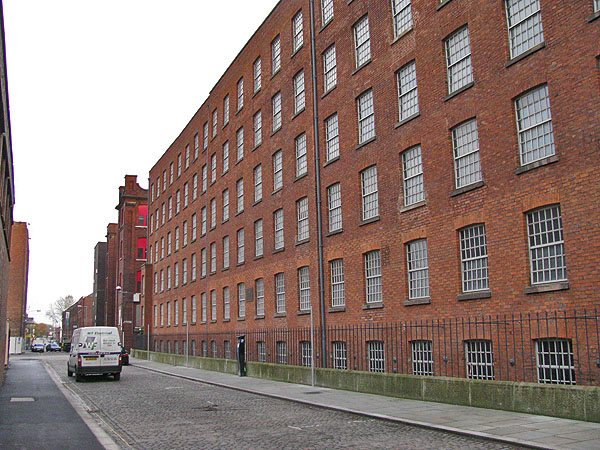|
Murray's Mills
|
| Murray's Mills are amongst the
world's earliest steam-powered cotton spinning factories. They
were constructed for Adam and George Murray, Scottish machine makers
and cotton spinners, between 1797 and 1804 and employed over 1200
people. Visitors from Europe and North America came to
Manchester, the first city of the Industrial Revolution, to marvel at
its technology, its buildings and its new way of life.
 The original complex consisted
of six
buildings grouped around an open quadrangle. The extended old
mill
forms the south side and New Mill the north side, each with a detached
engine house. Warehousing and offices occupied the Murray Street
block
to the west, its great gate providing the only entrance and exit for
pedestrians and waggons.
  The central canal basin linked
to the Rochdale Canal by a tunnel,
provided access for barges carrying coal, raw cotton. and finished
thread. The last Bengal Street block completed the square to the
east.
    Cotton spinning continued at
the
mills for 150 years. The second half of the 20th Century saw
their
decline and decay. Murray's Mills were known to be of National
Historic Significance. In 1998 Ancoats Buildings Preservaton
Trust
initiated their rescue, supported by the National Lottery through the
Heritage Lottery Fund, the Northwest Regional Development Agency and
Manchester City Council, the Trust led a programme of permanent repair
which was completed in July 2006.
   |